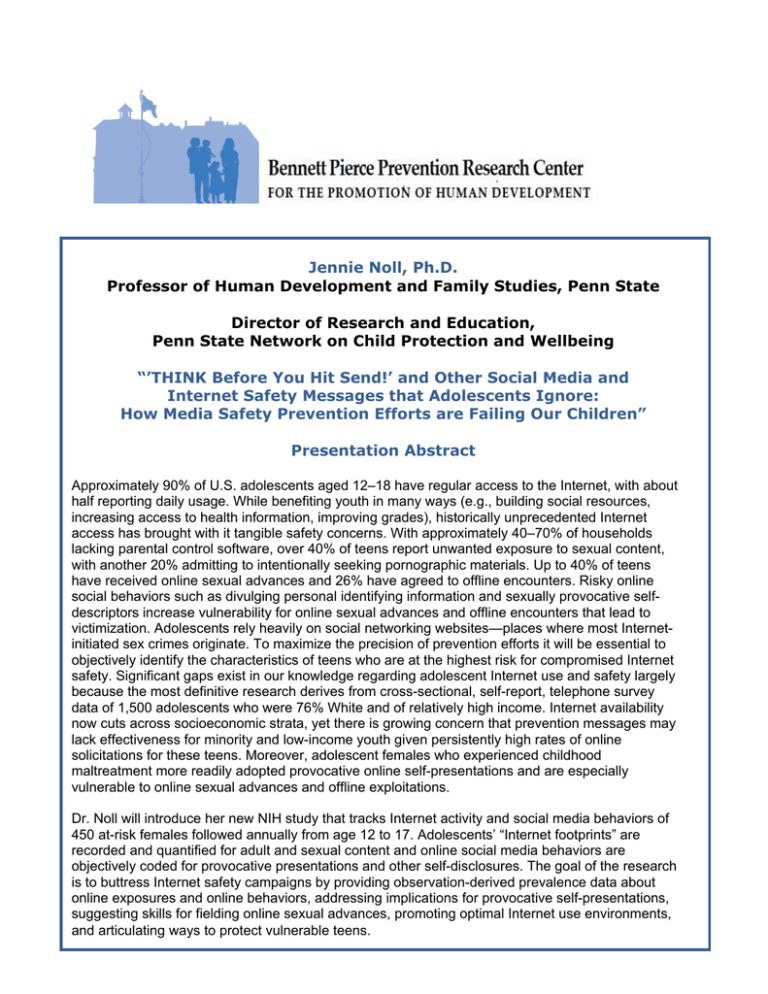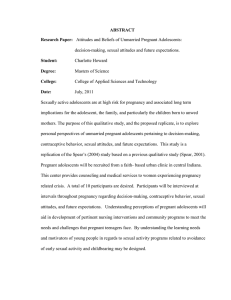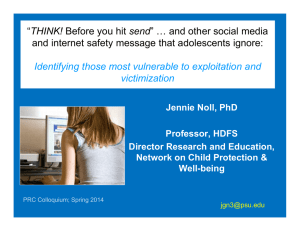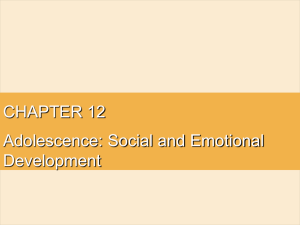
Jennie Noll, Ph.D.
Professor of Human Development and Family Studies, Penn State
Director of Research and Education,
Penn State Network on Child Protection and Wellbeing
“’THINK Before You Hit Send!’ and Other Social Media and
Internet Safety Messages that Adolescents Ignore:
How Media Safety Prevention Efforts are Failing Our Children”
Presentation Abstract
Approximately 90% of U.S. adolescents aged 12–18 have regular access to the Internet, with about
half reporting daily usage. While benefiting youth in many ways (e.g., building social resources,
increasing access to health information, improving grades), historically unprecedented Internet
access has brought with it tangible safety concerns. With approximately 40–70% of households
lacking parental control software, over 40% of teens report unwanted exposure to sexual content,
with another 20% admitting to intentionally seeking pornographic materials. Up to 40% of teens
have received online sexual advances and 26% have agreed to offline encounters. Risky online
social behaviors such as divulging personal identifying information and sexually provocative selfdescriptors increase vulnerability for online sexual advances and offline encounters that lead to
victimization. Adolescents rely heavily on social networking websites—places where most Internetinitiated sex crimes originate. To maximize the precision of prevention efforts it will be essential to
objectively identify the characteristics of teens who are at the highest risk for compromised Internet
safety. Significant gaps exist in our knowledge regarding adolescent Internet use and safety largely
because the most definitive research derives from cross-sectional, self-report, telephone survey
data of 1,500 adolescents who were 76% White and of relatively high income. Internet availability
now cuts across socioeconomic strata, yet there is growing concern that prevention messages may
lack effectiveness for minority and low-income youth given persistently high rates of online
solicitations for these teens. Moreover, adolescent females who experienced childhood
maltreatment more readily adopted provocative online self-presentations and are especially
vulnerable to online sexual advances and offline exploitations.
Dr. Noll will introduce her new NIH study that tracks Internet activity and social media behaviors of
450 at-risk females followed annually from age 12 to 17. Adolescents’ “Internet footprints” are
recorded and quantified for adult and sexual content and online social media behaviors are
objectively coded for provocative presentations and other self-disclosures. The goal of the research
is to buttress Internet safety campaigns by providing observation-derived prevalence data about
online exposures and online behaviors, addressing implications for provocative self-presentations,
suggesting skills for fielding online sexual advances, promoting optimal Internet use environments,
and articulating ways to protect vulnerable teens.







